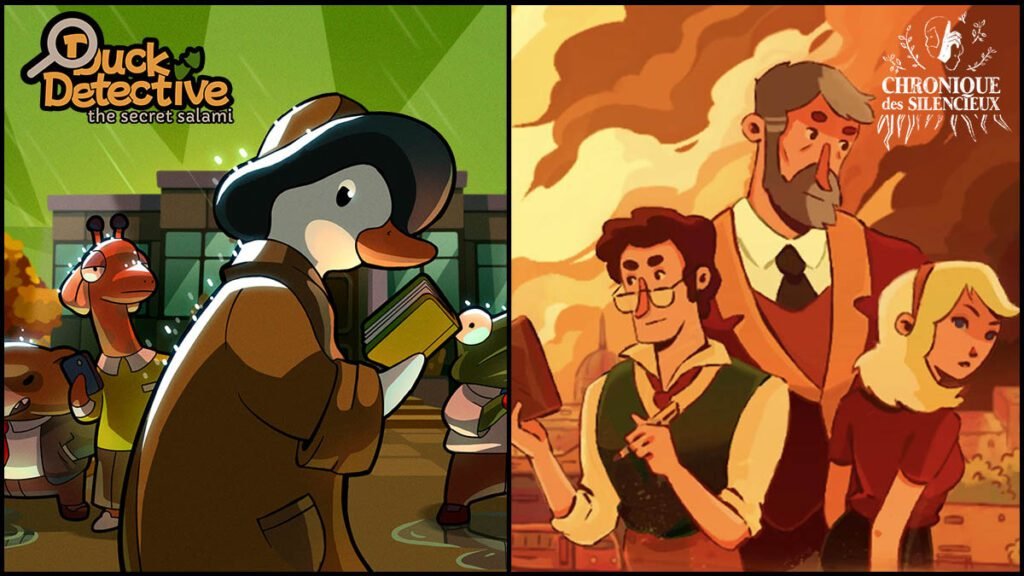There is something so satisfying about following a trail of breadcrumbs in a well-weaved mystery and anticipating who the culprit is. Within a detective game – when the gameplay is right – when you aren’t just following the story but inferring from testimonies and evidence, getting it right is a massive dopamine hit. There are two key elements here: creating a strong narrative with the appropriate amount of clues and the gameplay.
Sure, games like Sherlock have evidence processing, where you extract data using fancy kits. But at its core, good investigative gameplay is about finding clues, recording them, and sorting through them to create connections. With gameplay that condenses what could be a tedious process into an experience with just the right amount of challenge. When done right, it is incredibly fun. These systems make or break an ‘Investigative’ game, regardless of the story’s compelling. After all, what is the point of the payoff if you can’t even get there?
I played two this year, ‘Duck Detective: The Secret Salami.’ and ‘Chronique Des Silencieux.’ I thought it would be a fun exercise to study them both and see how their gameplay succeeds and/or fails, and how they stand up to investigative gameplay in general
First, A Disclaimer
We aren’t here to compare these games or ‘shame’ a game for doing something ‘wrong.’ Both games are dramatically different in narrative, theme, and tone. Thus, they have a completely different approach to their Clue Tracking systems. So, we will only examine how the story impacts the mechanics and how they could be improved. Then, we must consider how these mechanics work in the grand scheme of Investigative Gameplay.
Duck Detective: The Secret Salami
McQuacklin is a down-on-luck, ex-police detective, bread-obsessed, recently divorced (all signs point to the bread being the reason), and extremely dramatic Private Investigator. Yep… it’s pretty great. The game starts with him missing the client’s name, because he thought his ex was on the phone. When he gets to the Bear Bus Services office, he first needs to figure out who his client is. Then, it’s time to catch The Salami Bandit—the dastardly anthropomorphic lunch thief who leaves Salami as his calling card. (Cue the evil laughter in my brain)
The Clue Tracking System
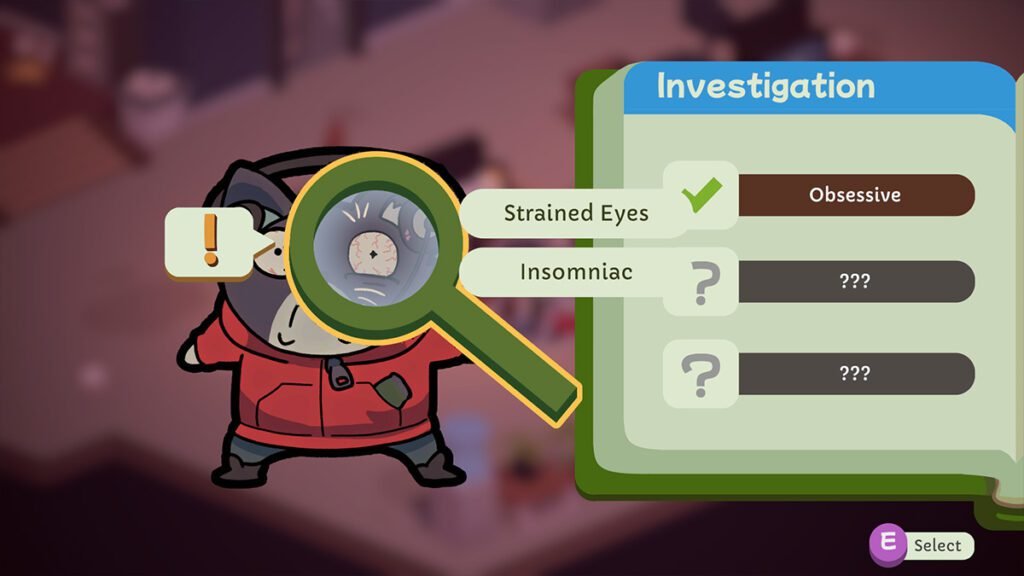
Solving this crime (seriously, who steals someone else’s lunch, that is just rude) is all about collecting relevant information in McQuacklin’s trusty notebook. This is done through 2 separate tasks:
Make Observations: You start by investigating a room to find elements, like noticeboards or suspects. To spot details, you can then ‘observe’ these more closely with a magnifying glass. This is how you can read a note in the suggestion box or spot a tan line from a ring on a character. When you find a potentially relevant word or detail, it is added to your ‘clue words.
Talk to all the possible suspects/victims: As you go through the conversations, McQuacklin will highlight and remember relevant words again.
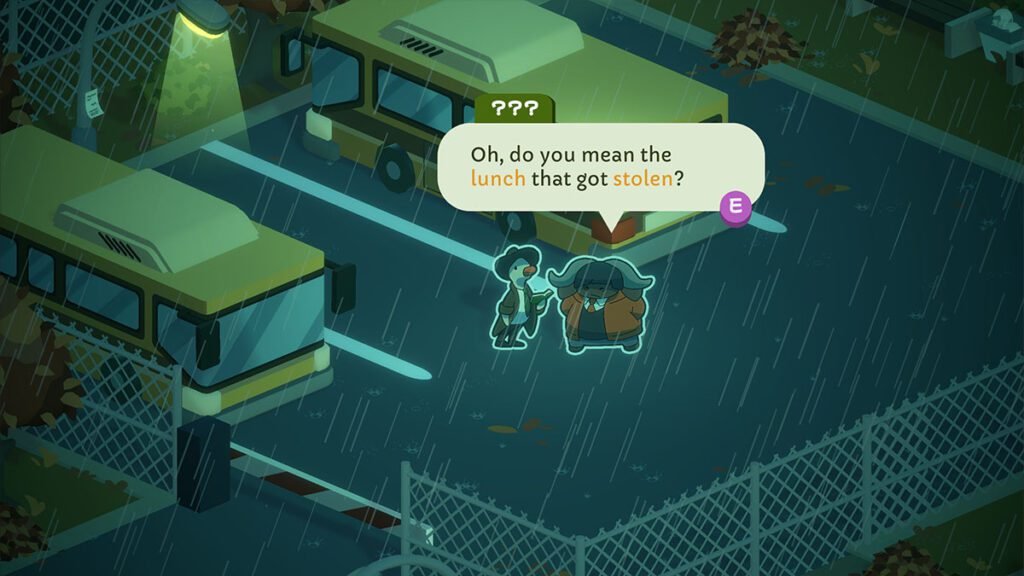
With the clue words collected, you can open up McQuaklin’s book to make deductions, add detail to the suspect page, find other information, and track and close tasks. Each task is an investigative thread to follow and shows how many investigative ‘words’ you must find. When you have the needed information, you pick from these words to complete the accompanying hypothesis and progress in the game.
How Does The System Play Out in Practice?
Duck Detective’s story and gameplay are light, funny, and clever. To match that, the game doesn’t record vast paragraphs of case notes. By compressing clues into Keywords and making hypothesis creation a simple ‘fill in the blank’, the player doesn’t feel the need to double-check everything.
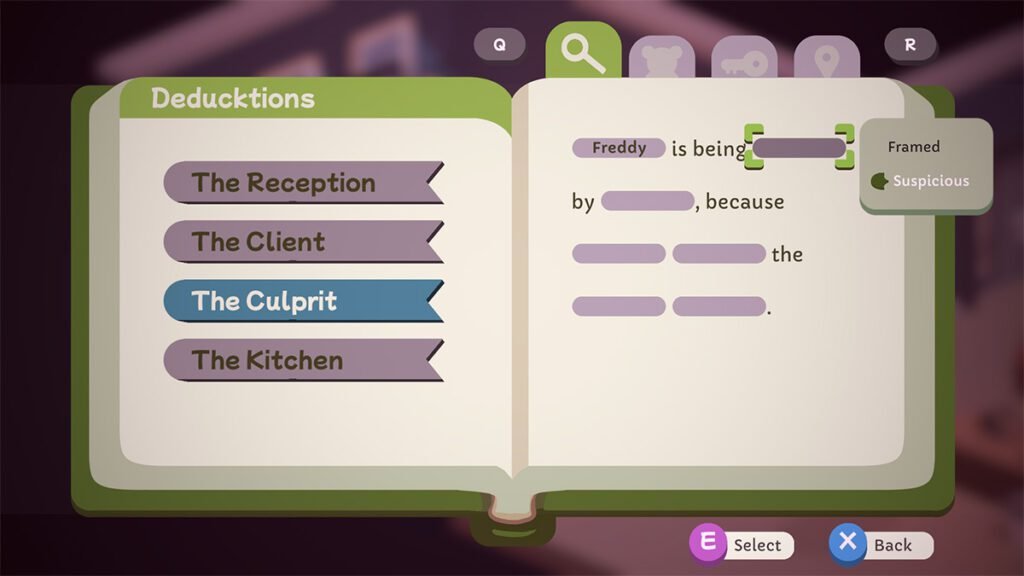
Additionally, you use the information immediately, preventing the need to remember details. Duck Detective has you achieve quick tasks, that add up to the story’s overall goal. These allow for a lot of twists and keep the story moving quickly.
Chronique des Silencieux
As a boy, Eugene Faury’s interest in solving mysteries is sparked when a police detective encourages him to ask questions ‘to help Eugene’s uncle.’ When he returns years later, that same officer takes him on as a protégé. Accompanied by his trusty recorder, he sets off around Bordeaux to uncover a mystery about the French Resistance Movement of WWII and its key players.
The Clue Tracking System
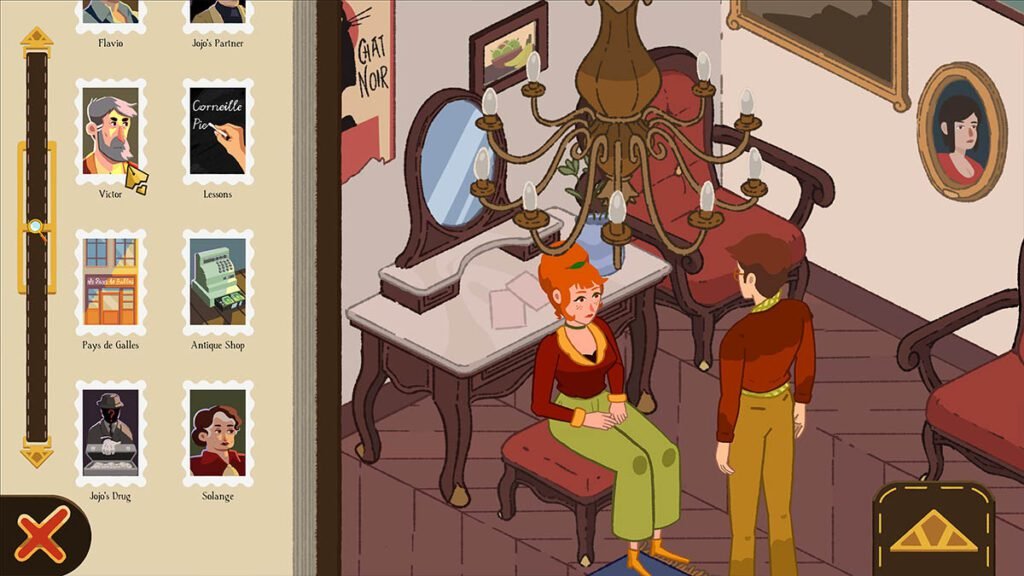
This game is about the people in it and Eugene’s ability to coax them to talk. You must record confessions and hidden truths. This is the primary method of solving the case. These recorded interviews track the story and allow you to investigate your goals.
You explore the world using point-and-click elements, snooping through drawers and cupboards to find any relevant evidence—from newspaper articles to army reports, photos, and letters. These are used to confirm information from the interviews or find inconsistencies using a fun graphic of push pins and thread to connect two elements.
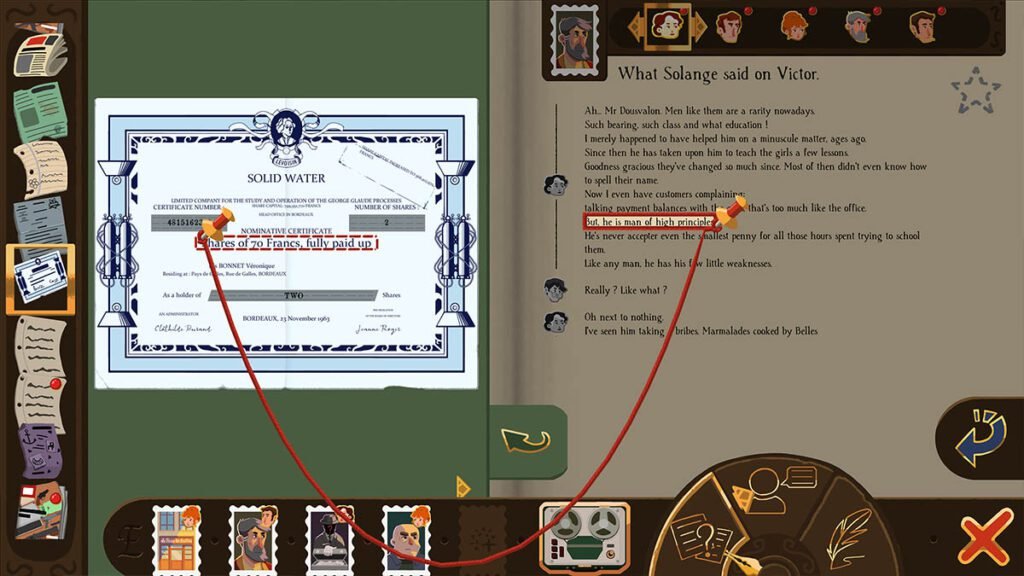
When you have the needed leads, you form a hypothesis. On the lead page of the case, you use the gathered information to create a hypothesis by connecting the people, or key elements, with a verb. This sets up a motive that you can then use to trigger a confrontation with a suspect.
How Does The System Play Out in Practice?
The foundation for this investigative system is strong. This story needs a lot of detail, so a system that creates connections to sort through the information is invaluable. Ideally, these connections should be easy to sort and make. In practice, this system needs some redesign to be impactful. Currently, you have to sort through 100s of lines of (interview) text to make a connection. You cannot compare interviews, which is the most common place you will find inconsistencies, and sometimes the connections are vague.
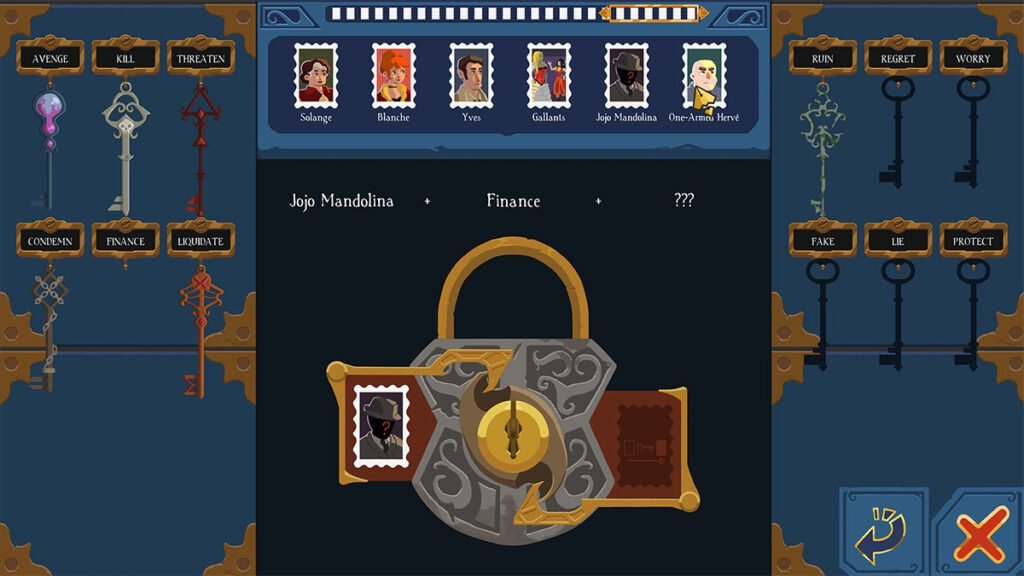
Now, the hypothesis mechanic is objectively excellent, with a fun, intuitive UI. Unfortunately, because the first step is tricky, you often stumble to get the correct hypothesis.
These mechanics are then used in an old-school detective showdown where you confront a suspect and show them the evidence to get them to confess. In these high-stakes moments, you have limited chances to make a connection. Ultimately, even though Chronique des Silencieux has a good foundation, the execution is lacking.
The Importance of a Good Clue Tracking System
A well-crafted investigative game makes the player participate. A key element is the ‘process,’ where you sort through the information and form the hypothesis. The designers have to create an appropriate system to match the depth of the story. Something as simple as the system in Duck Detective would not be usable in a game like Chronique des Silencieux because of how important the details are. There is nothing inherently wrong with the system in Eugene’s story; it just needs finessing to find the balance between mechanics, story, and detail.





